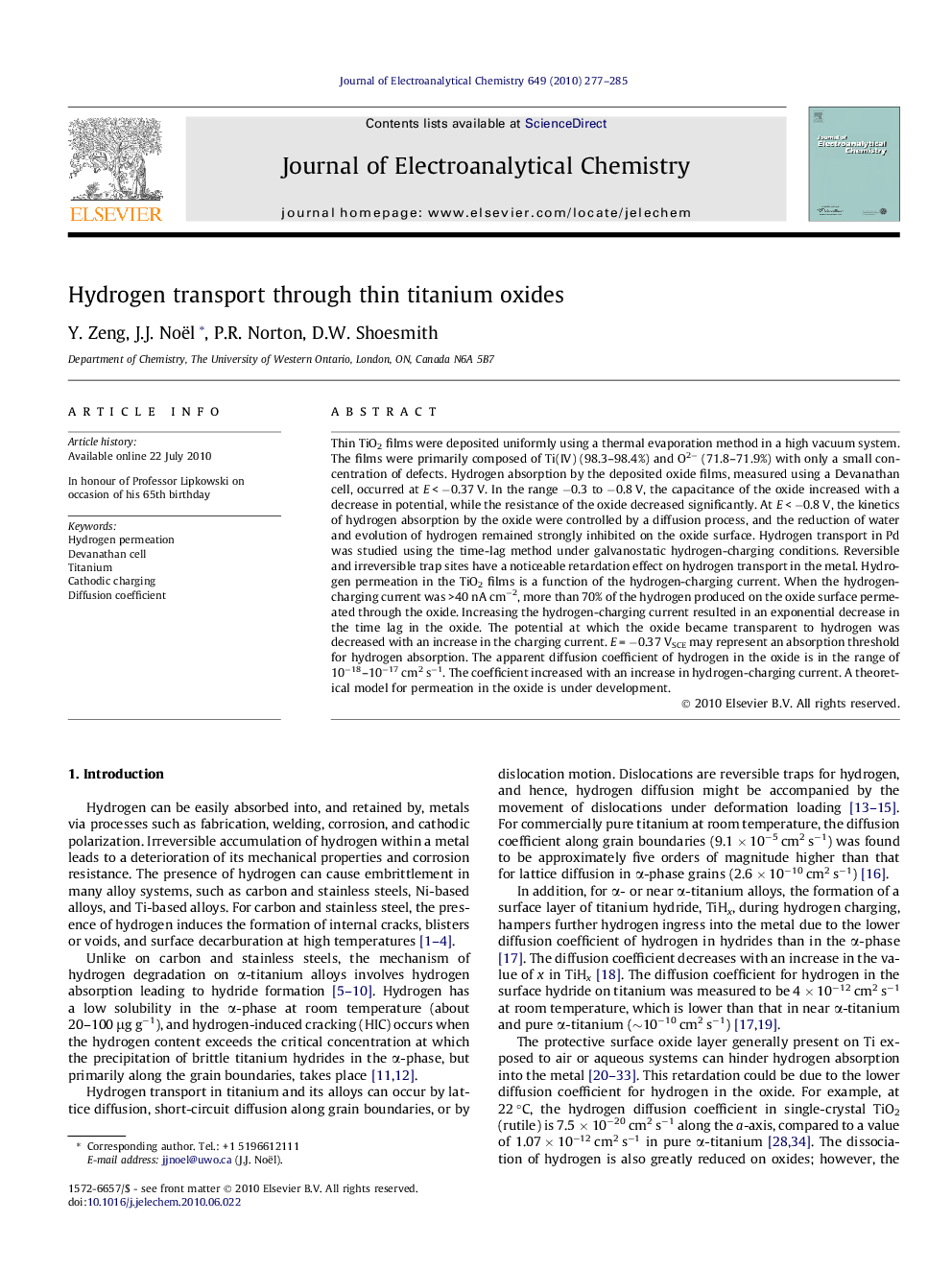| کد مقاله | کد نشریه | سال انتشار | مقاله انگلیسی | نسخه تمام متن |
|---|---|---|---|---|
| 219750 | 463294 | 2010 | 9 صفحه PDF | دانلود رایگان |

Thin TiO2 films were deposited uniformly using a thermal evaporation method in a high vacuum system. The films were primarily composed of Ti(IV) (98.3–98.4%) and O2− (71.8–71.9%) with only a small concentration of defects. Hydrogen absorption by the deposited oxide films, measured using a Devanathan cell, occurred at E < −0.37 V. In the range −0.3 to −0.8 V, the capacitance of the oxide increased with a decrease in potential, while the resistance of the oxide decreased significantly. At E < −0.8 V, the kinetics of hydrogen absorption by the oxide were controlled by a diffusion process, and the reduction of water and evolution of hydrogen remained strongly inhibited on the oxide surface. Hydrogen transport in Pd was studied using the time-lag method under galvanostatic hydrogen-charging conditions. Reversible and irreversible trap sites have a noticeable retardation effect on hydrogen transport in the metal. Hydrogen permeation in the TiO2 films is a function of the hydrogen-charging current. When the hydrogen-charging current was >40 nA cm−2, more than 70% of the hydrogen produced on the oxide surface permeated through the oxide. Increasing the hydrogen-charging current resulted in an exponential decrease in the time lag in the oxide. The potential at which the oxide became transparent to hydrogen was decreased with an increase in the charging current. E = −0.37 VSCE may represent an absorption threshold for hydrogen absorption. The apparent diffusion coefficient of hydrogen in the oxide is in the range of 10−18–10−17 cm2 s−1. The coefficient increased with an increase in hydrogen-charging current. A theoretical model for permeation in the oxide is under development.
Journal: Journal of Electroanalytical Chemistry - Volume 649, Issues 1–2, 15 November 2010, Pages 277–285